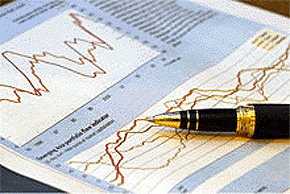
 By Roger J Kerr
By Roger J Kerr
Through 2011 and 2012 this column was much more positive on the outlook for the NZ economy for 2013 and 2014 than most other economic forecasters, consistently predicting that New Zealand’s annual GDP growth rate would increase to over 3%.
As a result there was encouragement for borrowers to fix their interest rates long term as eventually stronger growth leads to higher inflation and rising inflation always leads to increases in short-term interest rates.
A strong NZ dollar value against the USD, primarily due to a strong AUD and weak USD in global currency markets, kept inflation very low in 2012 and 2013 which continually postponed the timing of interest rate increases.
The positive expansion of the economy has now eventuated; aided by low mortgage interest rates boosting the property market, high dairy prices and the Christchurch rebuild lifting construction activity.
Now that we have achieved the growth target objective, what happens next?
Well, the first prediction for 2014 is that John Key and Bill English will dangle a large election carrot in front of voters later in the year in the form of conditional income tax cuts in 2015 or 2016 if they are re-elected. Naturally, conditional on the projected Government fiscal surpluses turning into reality.
The second prognosis is that the economy may not deliver to the current hyped-up expectations of all and sundry.
There are still plenty of risks ahead for the NZ economy, as the Moody’s credit rating agency pointed out last week.
In particular, I do start to worry when I see that a prominent Wellington-based economic forecasting house are now very positive on the NZ economy after being perma-bears (i.e. very negative, and wrong to boot!) for three years up until mid 2013.
In addition to the normal economic risks such as dairy prices falling, adverse climatic conditions on the agricultural sector and over-leveraged households reeling from rising mortgage interest rates, there is another economic risk looming on the horizon that even the RBNZ seem reticent to highlight.
Seemingly benign current inflation pressures could change abruptly if the NZD/USD exchange rate continues lower to the mid 0.7000’s over coming months.
In that scenario, importers of consumer products are forced for the first time in five years to lift selling prices. Tradable inflation moves up rapidly and there is no off-set from the stubbornly high non-tradable inflation.
Non-tradable inflation is all the domestic price changes not impacted by the exchange rate or competition from offshore. Annual non-tradable inflation has remained above 3% for several years as the non-competitive parts of the economy just pass through cost increases from their businesses onto their unsuspecting customers. Think local body rates, insurance premiums, plumbing repairs, certain construction materials and electricity.
As far as inflation is concerned, the Emperor may be exposed with no togs on (bathers in Australia!) when the favourable currency tide goes out.
The risk is that inflation increases more rapidly than what most expect, as large parts of our economy remain uncompetitive with low productivity.
Our small size is certainly the major reason why we have uncompetitive sectors. The RBNZ should be focussing on competition levels in the economy if they are serious about maintaining low and stable inflation in New Zealand. The Productivity Commission (headed by former RBNZ-er Murray Sherwin) seems to be the only party highlighting our poor levels of capital deployment, that if increased will increase both productivity and competition.
All the upside in the economy appears to be already fully priced into the NZ share market, the interest rate market and the NZ dollar value.
The risks from here appear more to the downside; however nothing catastrophic as the lower currency value will help exporting industries’ profits, investment and jobs.
-----------------------------------------------------------
To subscribe to our daily Currency Rate Sheet email, enter your email address here.
No chart with that title exists.
Roger J Kerr is a partner at PwC. He specialises in fixed interest securities and is a commentator on economics and markets. More commentary and useful information on fixed interest investing can be found at rogeradvice.com
6 Comments
For the first time I agree completely with Rodger's article. The issues confronting EMs at present is an indicator of how nasty things can get when the currency goes into rapid reverse.
Sitting in the traffic on Sandringham Road just north of Eden Park I saw some "non-tradeable inflation", Cars moving to early into the left hand lane (which is the tail of the bus lane) to go straight ahead at the intersection ahead (I have to as well but know better), The council man with the camera snapped 5 cars in less than a mimute period, 2K of non tradeable inflation
I wish that guy was there every day. I get to work so much faster when he is, every other day the bus lane is congested with single occupancy drivers who can't read english.
You could always ride a bike - 1 less car on the road
Yes Roger, and it is all part of the RBnz plan, viz. to have all consumers and particularly savers subsidise vested interests hiding under the governments' skirts; banks, fontera, winstones, & etc.
Ergophobia
appears that everything was'nt already priced into the nz$. us86 cents at the moment

We welcome your comments below. If you are not already registered, please register to comment
Remember we welcome robust, respectful and insightful debate. We don't welcome abusive or defamatory comments and will de-register those repeatedly making such comments. Our current comment policy is here.